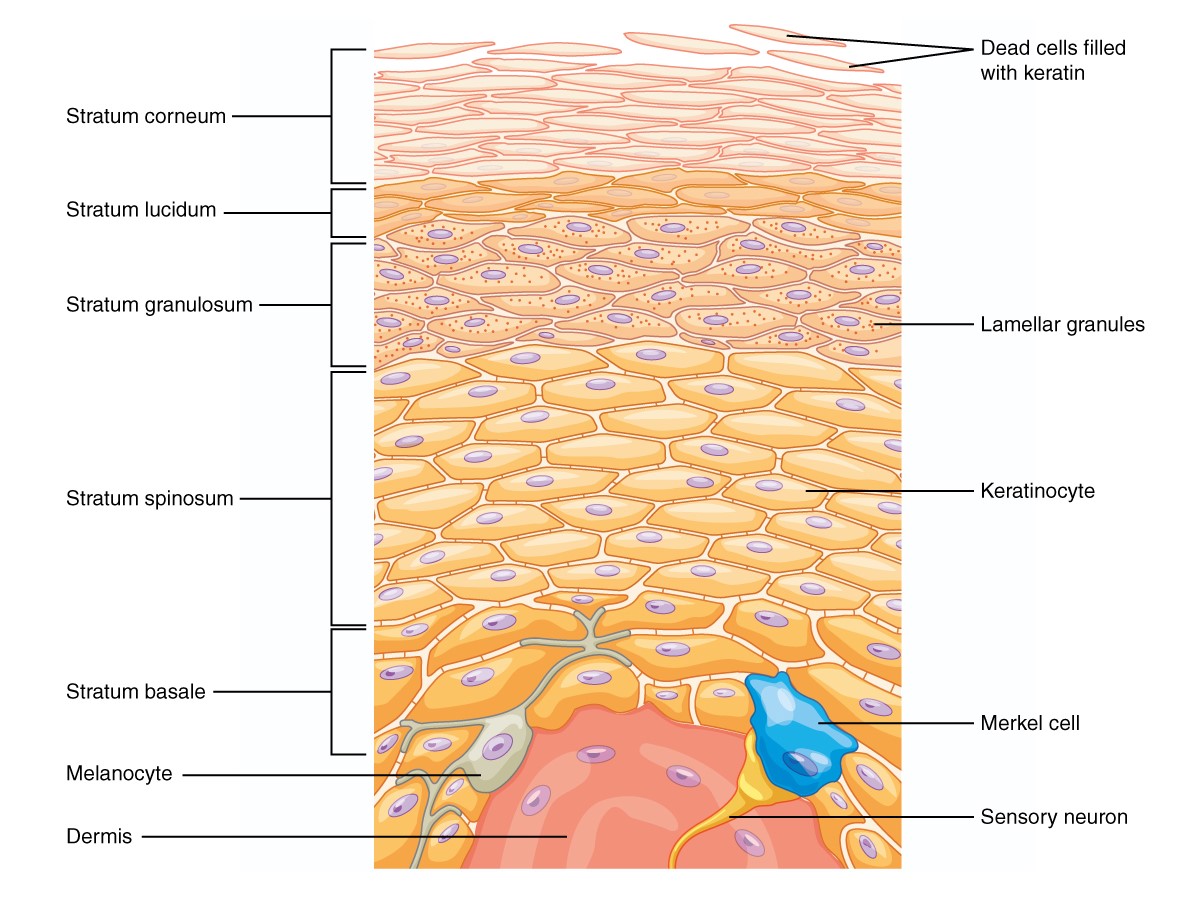Playlist
Show Playlist
Hide Playlist
Review: Anatomy and Physiology of the Skin
-
Slides Review Anatomy and Physiology of the Skin.pdf
-
Download Lecture Overview
00:01 Welcome to our lecture on basic physiology and structure of the skin. 00:05 We all know that the skin is the largest organ of the body with many organs in the body, but the skin is the largest organ of the body. 00:13 We want to talk about the functions of the skin. 00:18 The first one is protection. 00:20 Thermoregulation is the second one. 00:23 Third is sensation. 00:25 Immunological surveillance and vitamin D production. 00:30 So let's focus on protection. 00:32 How does the skin protect us? It's protection against mechanical, thermal and other physical injuries that can come from the external environments. 00:45 It also protects us against the harmful, harmful chemical agents. 00:48 If anything spills on the skin, the skin will make sure that we are protected from that. It also protects us against excessive loss of moisture and proteins. 00:59 And ah, later on I'll talk to you about conditions where the skin loses this function and then we get, as a result, skin conditions. 01:09 The skin also protects us against the harmful effects of the ultraviolet radiation, which can cause cancer and other conditions. 01:19 The second function of the skin is thermoregulation, so it regulates the blood flow through the skin, and it does this through the sweat production with sweat because we're trying to control our temperature. 01:33 And it also does this through thermal storage in the fat layer. 01:37 The fat layer protects us against a cold. 01:41 And of course we've got the thermogenesis in brown fat fat cells. 01:47 The third function of the skin is sensation the sense of touch. 01:53 The fourth one is immunological surveillance protecting the skin against invasion from organisms like bacteria, viruses, etc.. 02:04 The last the last function of the skin is vitamin D production. 02:09 When we don't have vitamin D production, we get conditions like rickets, which we'll talk to about later on. 02:18 Now let's move on from the functions of the skin and talk about the anatomy of the skin. 02:24 We know that the skin has got three layers. 02:27 Three layers. 02:28 The first one is the epidermis, the dermis, and the hypodermis or subcutaneous fat.
About the Lecture
The lecture Review: Anatomy and Physiology of the Skin by Ncoza Dlova is from the course Introduction to Dermatology.
Included Quiz Questions
What is the most superficial skin layer?
- Epidermis
- Dermis
- Hypodermis
- Supradermis
- Infradermis
Which of the following processes is NOT an example of thermoregulation of the skin?
- Protection from excessive loss of moisture and protein
- Sweat production
- Thermogenesis in brown fat cells
- Regulation of blood flow
- Thermal storage in the fat cell layer
Customer reviews
5,0 of 5 stars
| 5 Stars |
|
1 |
| 4 Stars |
|
0 |
| 3 Stars |
|
0 |
| 2 Stars |
|
0 |
| 1 Star |
|
0 |
I like because explain very well, concise and precisely. I recommend this lecture to everybody who need a quick overview of dermatology




